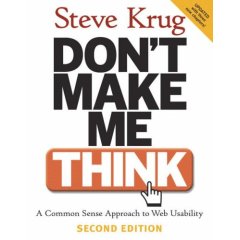Client-Side Links
 XML Form Documents in StarOffice 8
XML Form Documents in StarOffice 8
According to too many “wise” Americans who have collided with me over the years, I’m just a quivering pile of emotions wrapped up within a pretense of cool. So when I (figuratively) stand up in front of the InfoPath team and tell them that I am very, very interested in Erwin Tenhumberg’s article “Just switch!–XML Form Documents in StarOffice 8,” surely they must leverage the collective “wisdom” and accuse me of blindly hating Microsoft in general and InfoPath in particular. This self-flattery will get you guys nowhere (just like the MSFT stock price)… The promise here is that StarOfffice (and OpenOffice) has an implementation of XForms for the Open-Source masses. I think this would be a first—and my first technical reason to use an Open Source word processor. InfoPath is not an XForms implementation—it’s a freewheeling expression of Microsoft “innovation” with clumsy, near-paranoid, rigid security features.
FCKeditor
Could this be the one? There are two main themes running through HTML-based editors that make me stop using them. The first problem is shabby design featuring a lack of respect of JavaScript. The second problem is a lack of proper support for standards like XHTML. Many of these problems come up after you’ve spent hours/weeks using the solution and you are not jumping at a new opportunity to get burned with alternative.
SharpDevelop
“#develop (short for SharpDevelop) is a free IDE for C#, VB.NET and Boo projects on Microsoft's .NET platform. It is open-source, and you can download both sourcecode and executables from this site. In addition, you can find the latest information and changes on #develop, as well as get in touch with the team in the forum.”
What should also be said on the very first page of the SharpDevelop web site is that this tool does not support ASP.NET and is designed for client-side development.
 Canvas
Canvas
From developer.mozilla.org: “<canvas> is a new HTML element which can be used to draw graphics using scripting (usually JavaScript).” And then Google.com comes to the rescue for Microsoft Internet Explorer with ExplorerCanvas: “Firefox, Safari and Opera 9 support the canvas tag to allow 2D command-based drawing. ExplorerCanvas brings the same functionality to Internet Explorer. To use, web developers only need to include a single script tag in their existing web pages.”
WPF Blog Writer
Lester has a “WPF Blog Writer.” It features a XAML/HTML Converter that should be supported directly by Microsoft—instead of indirectly.
“Using Visual Studio to Debug Javascript in IE”
Just a reminder from CodeProject.com for Visual Studio Users who can’t use Firebug for some reason…
“Office 2007—Everything you know is Different?”
Here’s Scott: “I downloaded and installed Office 2007 Beta 2 and I’m on freaking Mars. I'm totally lost. Everything’s changed, it’s like someone broke into my office and moved everything.” I’m sure he has a follow-up article.
Yet another, Lone Microsoft Employee Trying to Make HTML out of Private Property
Keith wishes you luck: “XAML FlowDocuments and HTML have some things in common. But they also have some distinct differences that makes writing a conversion utility tricky. A well written XSLT could potentially process XHTML input and generate FlowDocument content... But this pre-supposes well-formed HTML in the first place. I’ve tried to go down this road on a few occasions with limited success.”
The Power of Google Gears
Jack Herrington: “I look at Gears a lot like Ajax, it’s a small set of new functionality that takes traditional web pages and moves them one step toward having a complete desktop feel.”
